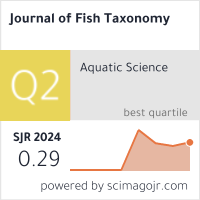Recent Advances in Functionalized MOFs for Lead Adsorption and Detection in Water Systems
Keywords:
Metal-organic frameworks; Functionalization; Lead adsorption; Water treatment; Heavy metal detection; Environmental remediation; Adsorption mechanisms; Electrochemical sensorsAbstract
Lead (Pb²⁺) contamination of water sources threatens the environment and public health on a global scale and calls for the fabrication of highly effective remediation materials. Metal-organic frameworks (MOFs), especially the functionalized ones, have gained great attention as potential adsorbents and sensing materials for the detection of lead ions in aqueous solutions. In this minireview, the current advances (2020-2025) in the field of functionalized MOF-based approaches on lead removal and sensing are precisely covered. Based on more than 220 articles, by systematic literature evaluation, we highlight how high adsorption capacity by judicious functionalization with groups (-NH₂, -SH, -COOH, ethylenediamine and multidentate chelators) can be achieved with 200-800 mg/g and even higher with an outstanding selectivity (>90%) in multi-ion solution systems prevailing under most water matrices. The review focuses on new detection methods, such as fluorescent MOF probes, electrochemical sensors, and colorimetric assays with LODs of 0.1-to-10 µg/L in compliance with WHO standards for drinking water. Critic review indicates that amine functionalized MOFs obtained better selectivity through the chelation process, but the thiol functionalized systems were the fastest in achieving equilibrium in 15-30 min. Coalescing magnetic attributes and polymer composites, facile recovery and regeneration over multiple cycles (>85% of capacity retention achieved after 10 cycles) can also be realized. Water stability, the economics of scale-up, and the effects of practical matrices in real life remain as the challenging issues, and the perspectives for the future are stated as hybrid functionalization approaches, smart sensing devices, and routes for industrializing the technology. This paper demonstrates that functionalized MOFs can be transformative in bridging fundamental and practical environmental applications.








